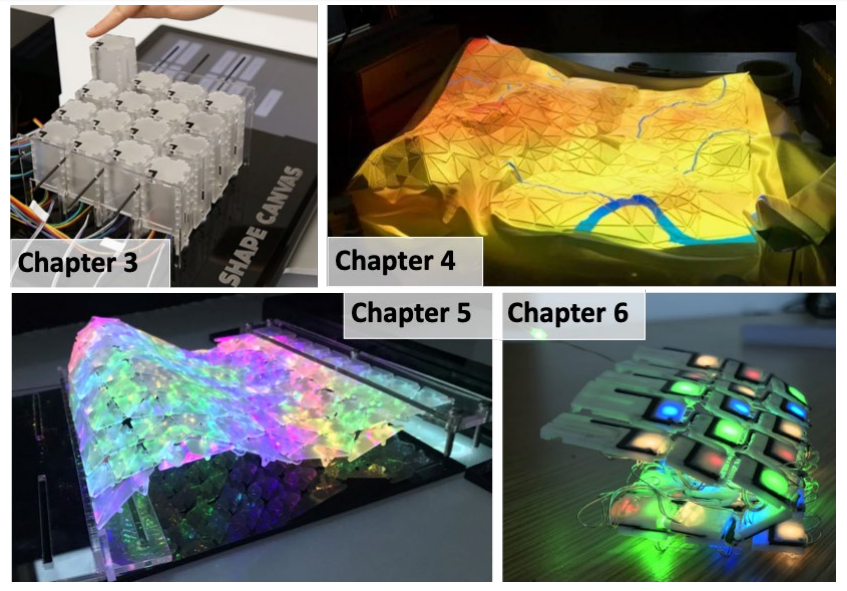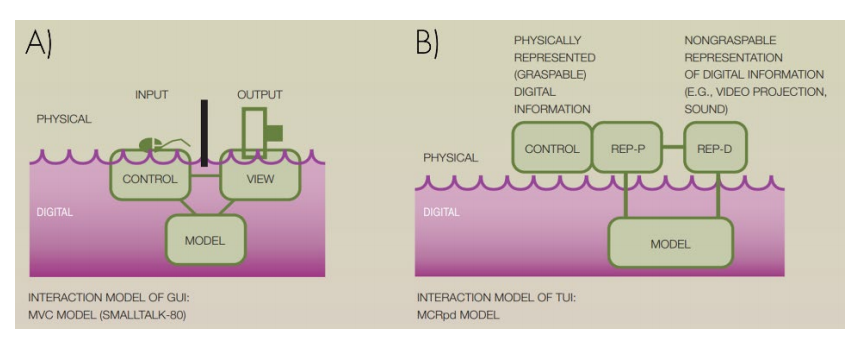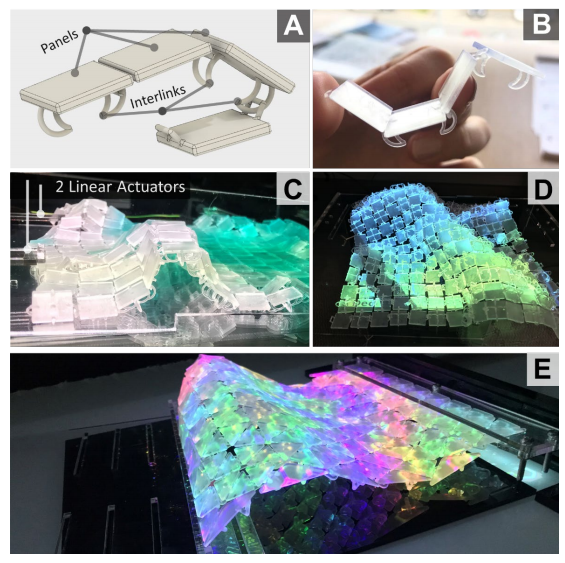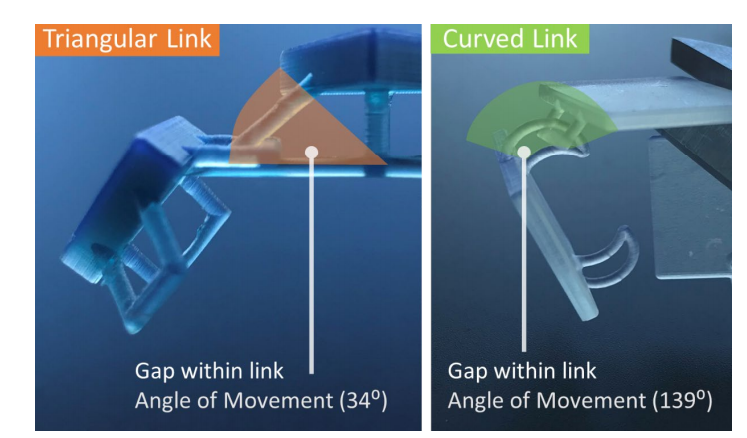Aluna Everitt recently submitted her thesis, ‘Digital Fabrication Approaches for the Design and Development of Shape-Changing Displays,’ to the Faculty of Science and Technology at Lancaster University. To achieve better success with deformable surfaces, Everitt explores the uses of 3D printing and laser cutting.
As technology continues to progress worldwide, shape-changing displays are just one element that make users lives easier with features like tangible interaction, enhancing applications like the following:
- Dynamic landscaping
- Topographical modeling
- Architectural design
- Physical telepresence
- Object manipulation
Functioning via mechanical actuators, shape-changing displays allow the deformation of a specific surface through programming (in the form of dynamic physicalizations encoding data).
“Tangibility is a key aspect of data physicalization and the form of the physical artefact is often perceptible by touch,” states Everitt. “These physical data representations often encourage direct interaction to create an engaging user experience.”
The author is not only focused on the uses of shape-changing displays but also how users on every level can employ data physicalizations to create them for themselves. As accessibility and affordability become increasingly present in the 3D printing realm, systems like shape-changing displays are more possible—especially with re-usable parts, basic hardware that is easy to install, and ease in design and production that encourage users overall.

Examples of prototypes developed based on proposed fabrication approaches presented in each chapter of this thesis. Moving from traditional pin array in Chapter 3, to a semi-solid laser-cut two-layer surface in Chapter 4 that uses fewer linear actuators, to a single layer 3D printed deformable surface in Chapter 5, to finally a multi-material deformable surface that has embedded interaction and visualization capabilities in Chapter 6.
Everitt emphasizes, however, that the research community must know what types of data to use in these ‘novel hardware systems.’ With deeper comprehension of what types of data are suitable, the author also realizes that they will be able to put such systems to use in a range of displays—many of which are still in prototype mode today and treated as ‘novelties rather than practical use cases.’ This technology is relegated to shape-changing displays, tangible interfaces, physical user interfaces, data physicalizations, and deformable user interfaces.

Standardised interaction model for GUIs (A) and TUIs (B) proposed initially by Ullmer and Ishii (2000).
Challenges in this field still include accessibility, along with the ability to progress from creating prototypes to offering a greater sense of design, and offering better toolkits so that users experience easier implementation of all the details required for each system.
“Scaling the device form factors and ensuring high-resolution shape-output is another technical challenge currently faced by the field,” explains Everitt. “The availability of small actuators with minimal weight is still limited and comes to a high cost.
“Increasingly, shape-changing interfaces are also transiting from rigid forms to flexible and stretchable, and even floating shapes.”
As 3D printing becomes increasingly popular for a diverse range of users worldwide, new fabrics and textiles are possible. For this thesis, the author studied 3D printed panels serving as a continuous surface, able to adapt to either being fluid or rigid, depending on overall design—and ultimately, also assisting in the progress of shape-changing displays.
The interlinked surfaces displayed less need for actuators, featuring horizontal force actuation, the potential for embedded parts, and continued properties regarding fluidity and rigidness—‘whilst rendering cylindrical, oval, and tunnel forms.’ Clear resin can be used during 3D printing also for improved visualization.

Basic 3D model (A) and 3D print (B) of interlinked panels, and fabricated shape-changing displays examples (C-E).

Bottom side of the surfaces. Interlinked triangular panels 3D printed (FDM) with red filament – Panel 21×19mm and interlink width 4mm (A); SLA with clear resin – Panel 20×17mm and interlink width 3mm (B). 3D model source [106].
Other challenges with laser cutting involve more support necessary for individuals who want to learn such technical knowledge—and the fact that laser cutting is still undeniably a ‘niche skill.’ It is however, popular with numerous multi-faceted users today in projects such as engraving, creating colorful collections in fashion, along with innovating and developing new design guidelines.
FDM 3D printing, featuring multi-material capabilities, was shown to fully support fabrication of interactive and deformable surfaces. In using techniques like laser cutting, prototypes can also be designed more quickly, and without extensive requirements for additional hardware.
“The research-through-design methodology also emphasizes that rapid prototyping helps researchers and designers to iteratively refine and develop new hardware systems are that can meet functional requirements as well as develop more meaningful user experience,” stated the author in conclusion.
“Potentially, even hobbyist and maker community members are able to recreate these fabrication approaches using commercially available materials and equipment. Particularly, by supporting accessible fabrication through the use of low-cost materials that can be purchased commercially and are widely available (e.g. spandex and FDM filament).”
What do you think of this news? Let us know your thoughts; join the discussion of this and other 3D printing topics at 3DPrintBoard.com.
Source / Images: ‘Digital Fabrication Approaches for the Design and Development of Shape-Changing Displays’]
Subscribe to Our Email Newsletter
Stay up-to-date on all the latest news from the 3D printing industry and receive information and offers from third party vendors.
You May Also Like
Profiling a Construction 3D Printing Pioneer: US Army Corps of Engineers’ Megan Kreiger
The world of construction 3D printing is still so new that the true experts can probably be counted on two hands. Among them is Megan Kreiger, Portfolio Manager of Additive...
US Army Corps of Engineers Taps Lincoln Electric & Eaton for Largest 3D Printed US Civil Works Part
The Soo Locks sit on the US-Canadian border, enabling maritime travel between Lake Superior and Lake Huron, from which ships can reach the rest of the Great Lakes. Crafts carrying...
Construction 3D Printing CEO Reflects on Being Female in Construction
Natalie Wadley, CEO of ChangeMaker3D, could hear the words of her daughter sitting next to her resounding in her head. “Mum, MUM, you’ve won!” Wadley had just won the prestigious...
1Print to Commercialize 3D Printed Coastal Resilience Solutions
1Print, a company that specializes in deploying additive construction (AC) for infrastructure projects, has entered an agreement with the University of Miami (UM) to accelerate commercialization of the SEAHIVE shoreline...






























